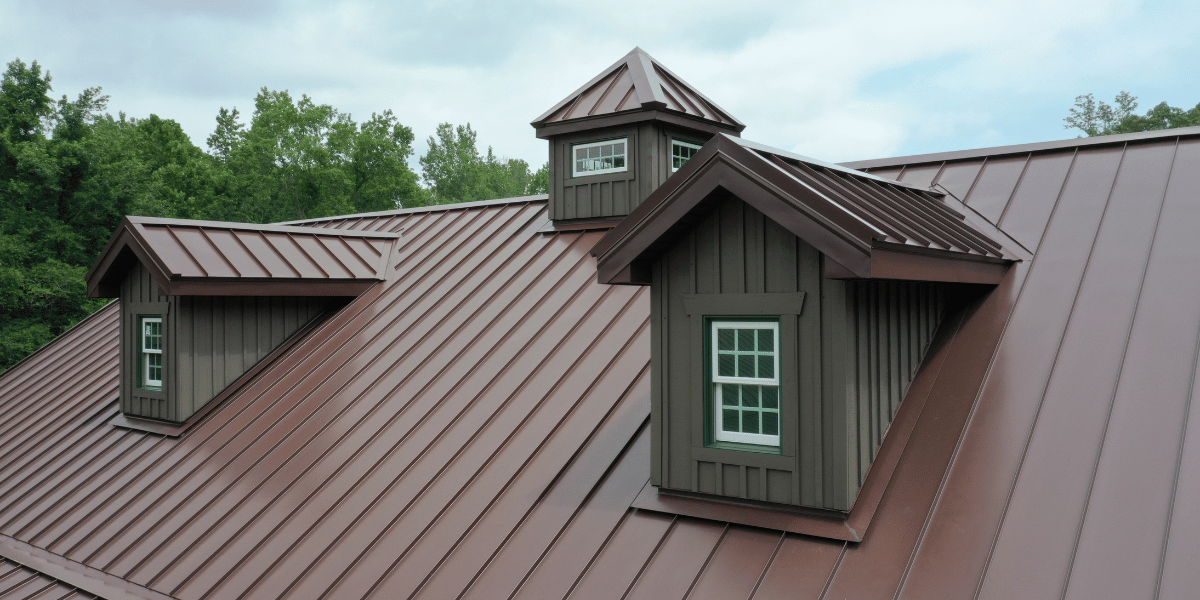Roof slope, commonly referred to as the pitch, is the angle at which a roof rises compared to its horizontal span. The slope determines how quickly water will run off the roof. A steeper slope means faster water runoff, while a flatter slope might allow water to pool or not shed as effectively.
Minimum Slope for Metal Roofing
The minimum slope for most metal roofing is 3:12. This means for every 12 horizontal inches, the roof rises by 3 inches. At this slope:
- Water runoff is effective enough to prevent pooling.
- There’s less chance of wind-driven rain getting underneath the panels.
However, some types of metal roofing can be installed on low-sloped or nearly flat roofs, but special considerations, like seam type and underlayment, are necessary.
Recommended Slopes
While 3:12 might be the minimum for many metal roofs, sometimes a steeper slope is recommended:
- Aesthetics: A steeper pitch can enhance the architectural appeal of certain building styles.
- Snow Regions: In areas that receive heavy snowfall, a steeper slope helps in shedding snow more efficiently.
- Longevity: Faster water runoff usually means less wear and tear over time.
Special Considerations for Low Sloped Roofs
If you’re considering installing metal roofing on a low-sloped roof (between 0.5:12 and 3:12), keep the following in mind:
- Standing Seam Roofs: These roofs have interlocking panels that create raised seams, which are ideal for low slopes as they provide excellent water-tightness.
- Underlayment: A high-quality underlayment that’s self-adhering and waterproof is essential for low-sloped roofs to prevent potential leaks.
- Maintenance: Regular maintenance and inspections are even more crucial for low-sloped roofs to ensure there’s no debris buildup or water pooling.
Beyond the Slope
While slope is vital, other factors also play a role in a metal roof’s performance:
- Material Quality: High-quality metal that’s properly coated can help prevent rust and increase longevity.
- Installation: Even the best roofing material can fail if not installed correctly. Always hire an experienced metal roofing contractor.
- Ventilation: Proper attic ventilation ensures that moisture doesn’t build up underneath the metal, which can lead to condensation and potential water damage.
The slope of a metal roof plays a significant role in its performance and longevity. While there are minimum requirements to ensure effective water runoff, the ideal slope for a metal roof can vary based on aesthetic desires, regional weather conditions, and building style. Always consult with an experienced roofing professional when considering a metal roof for your building or home.

